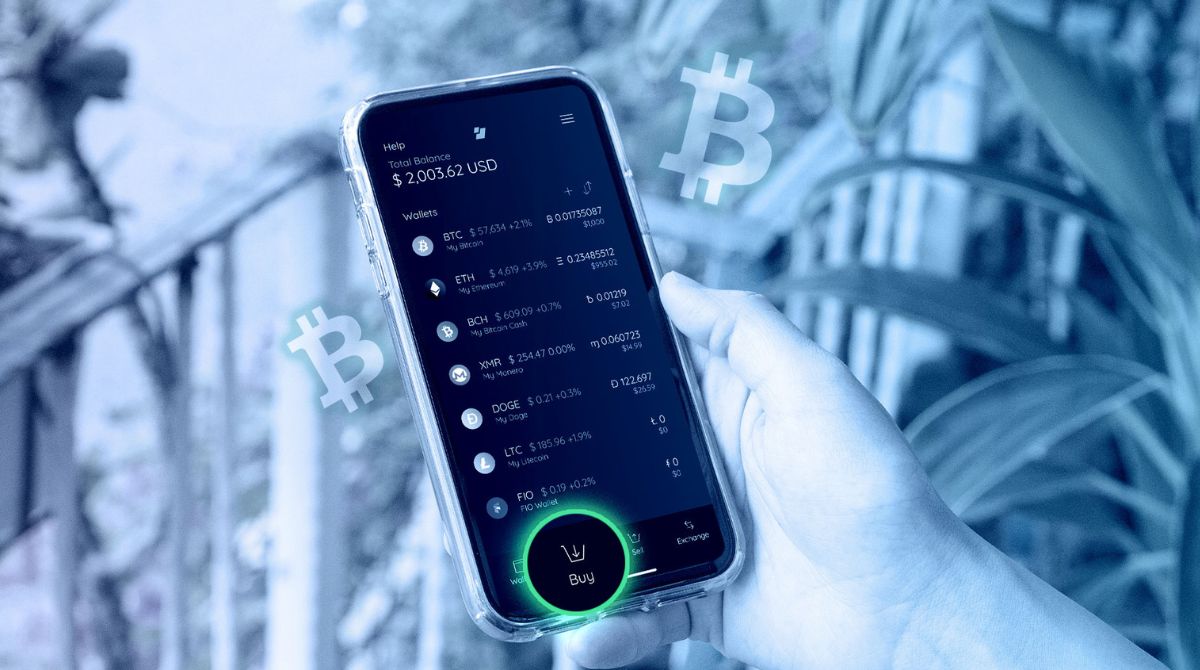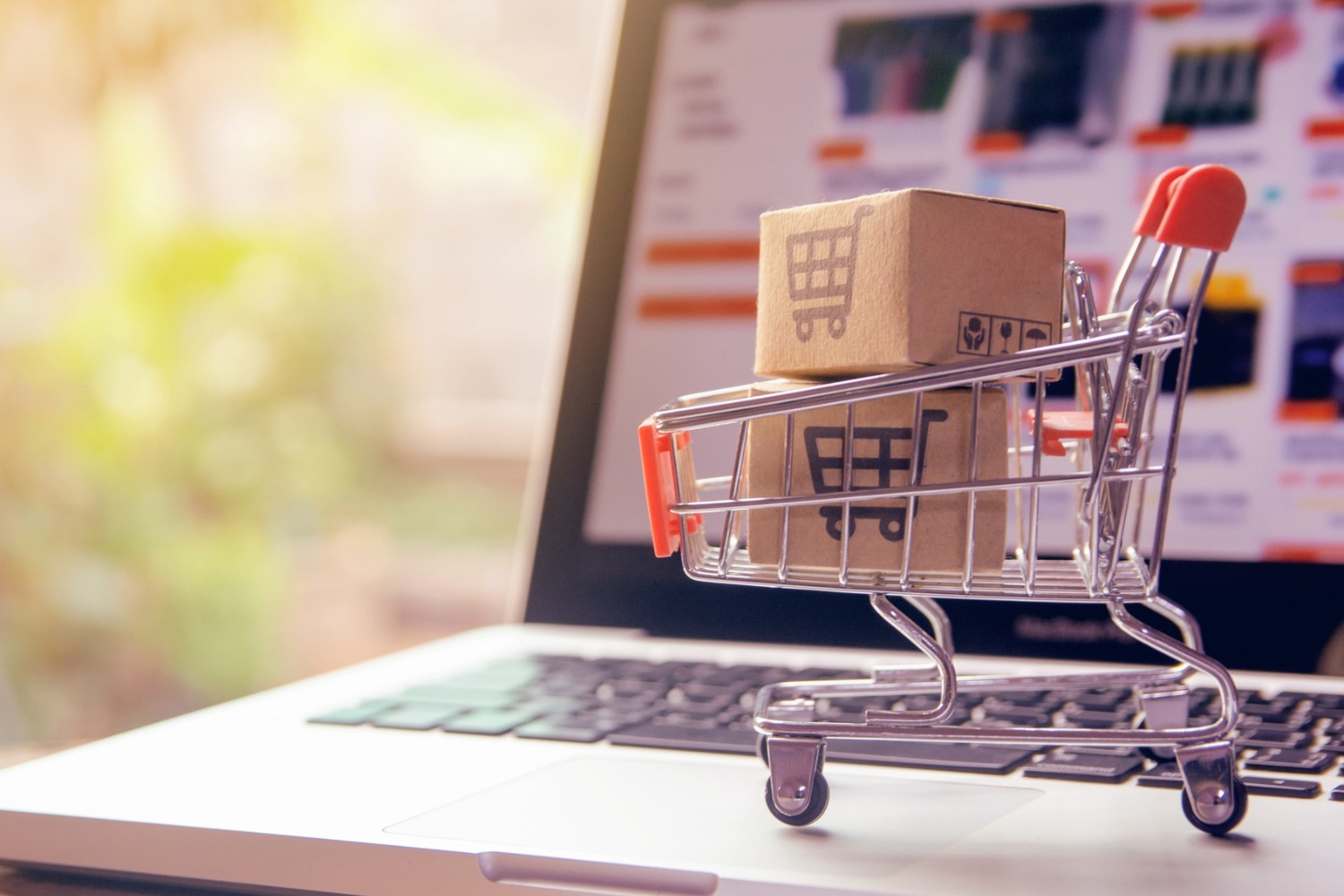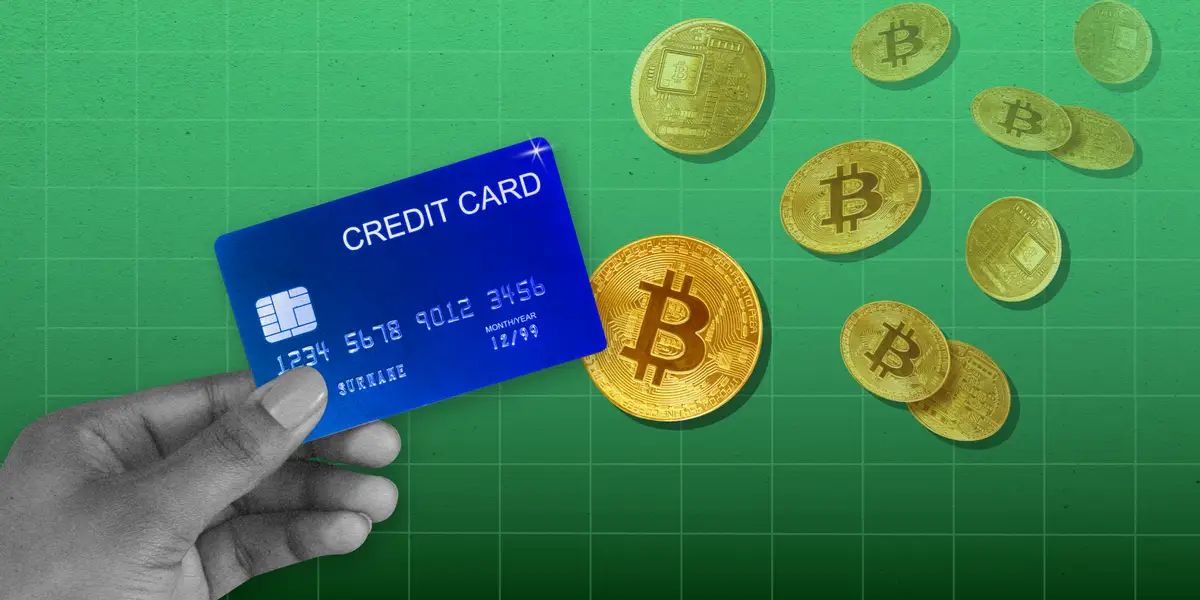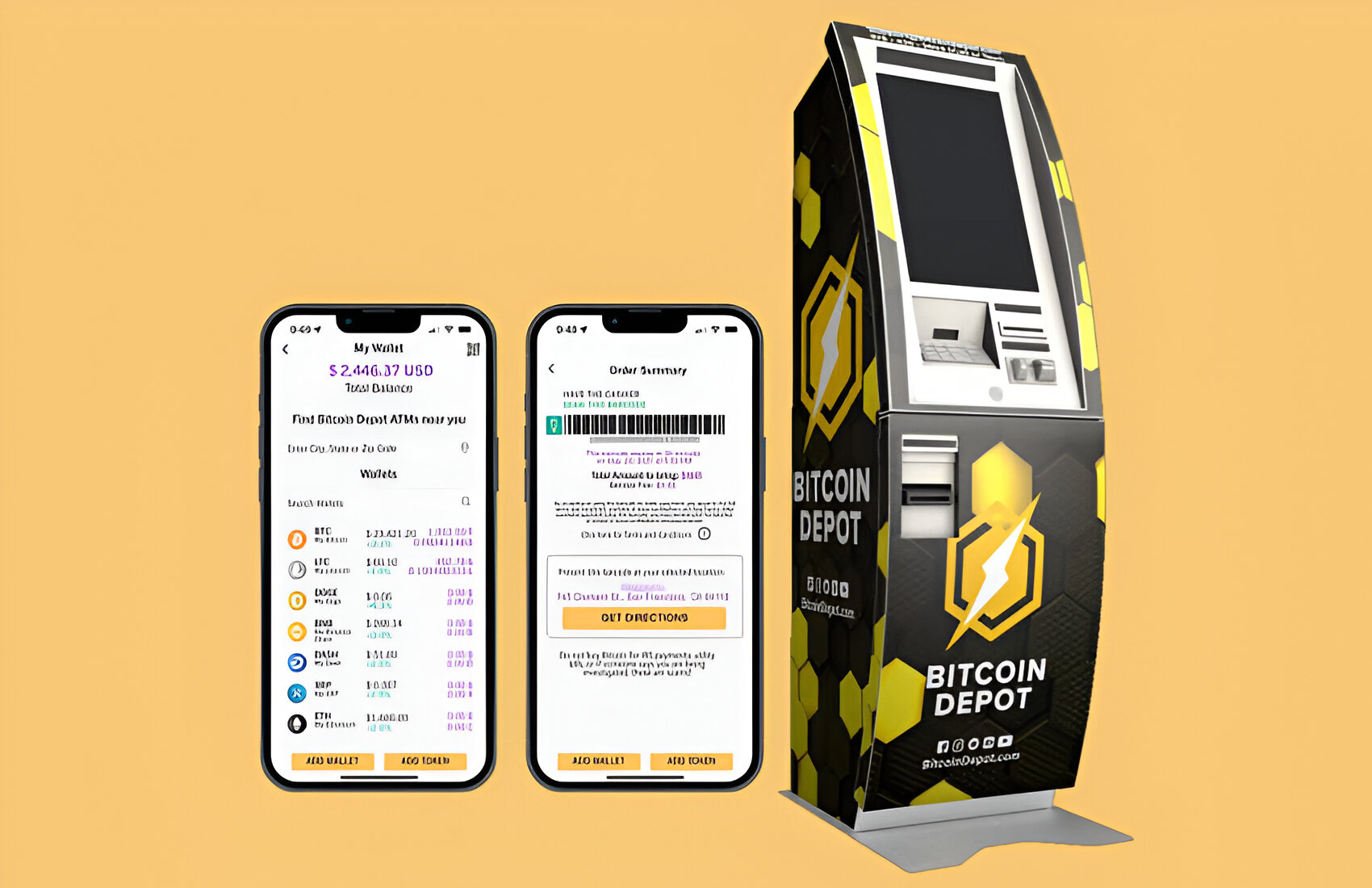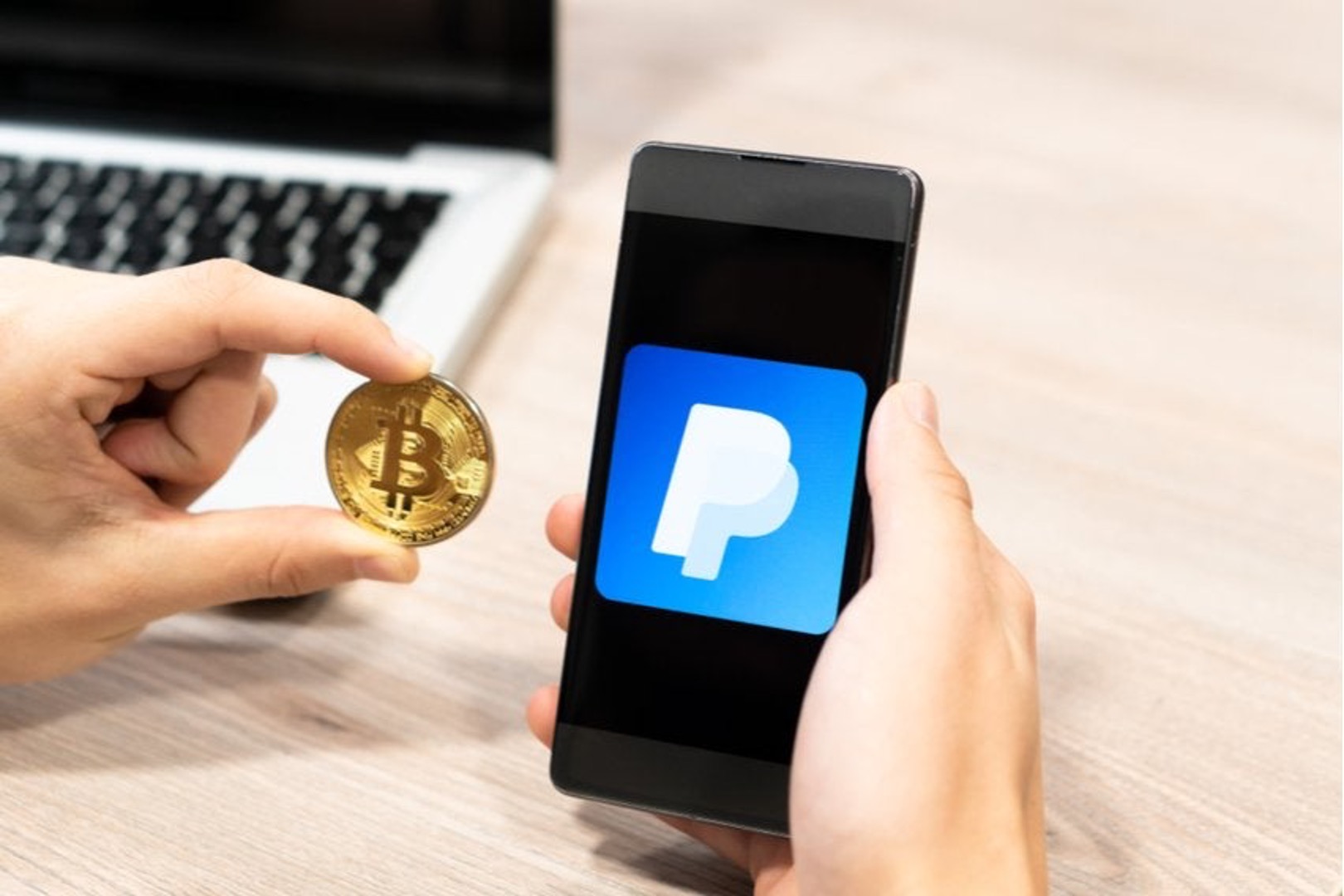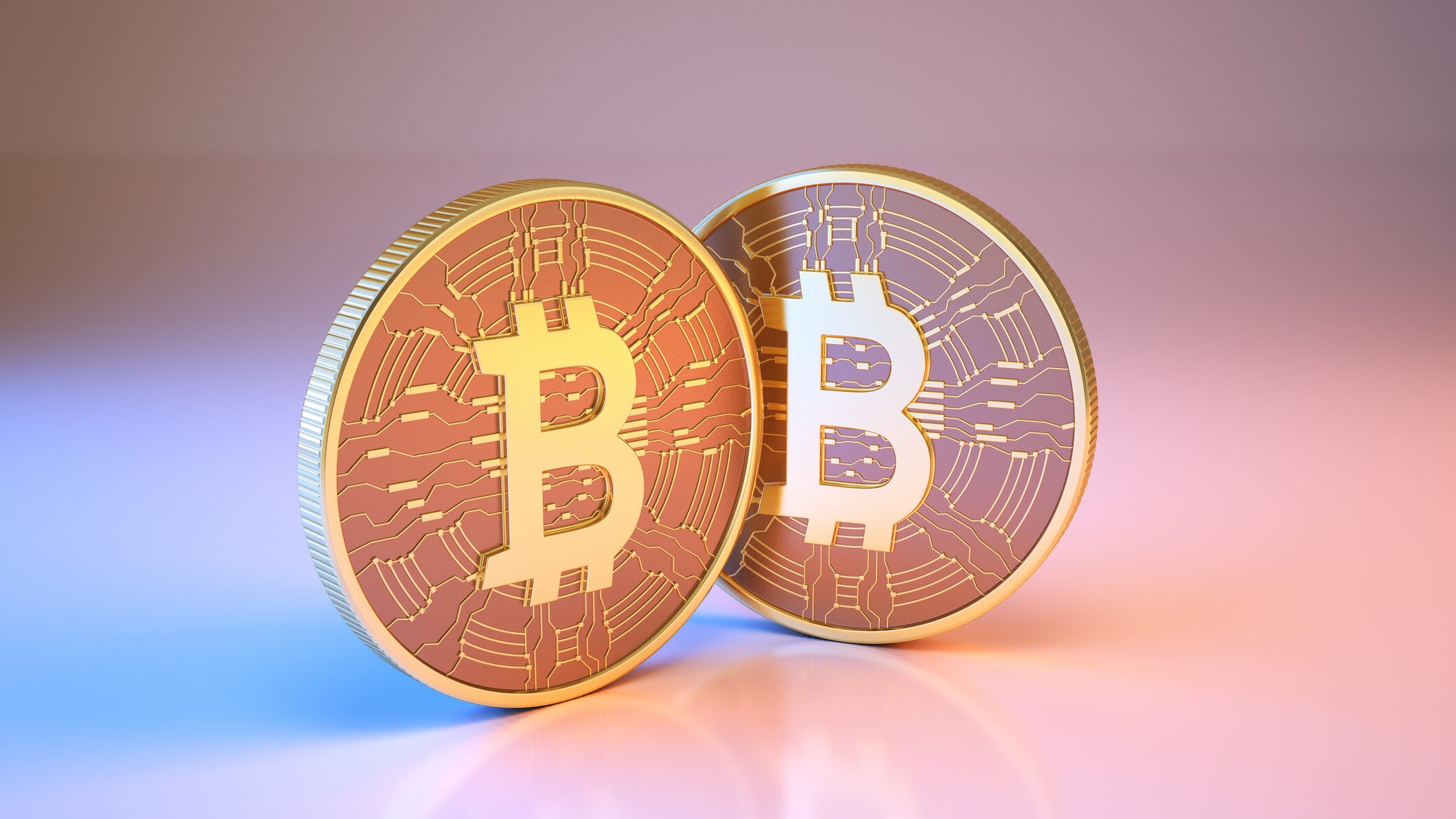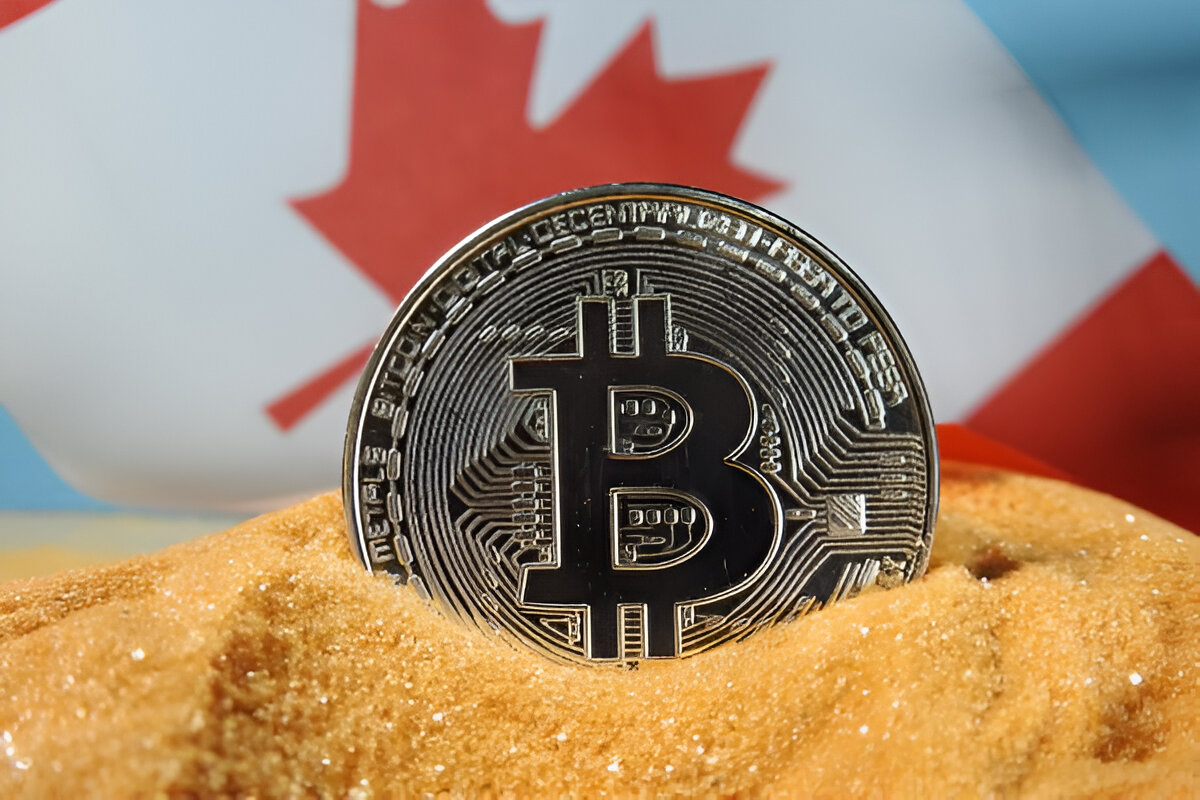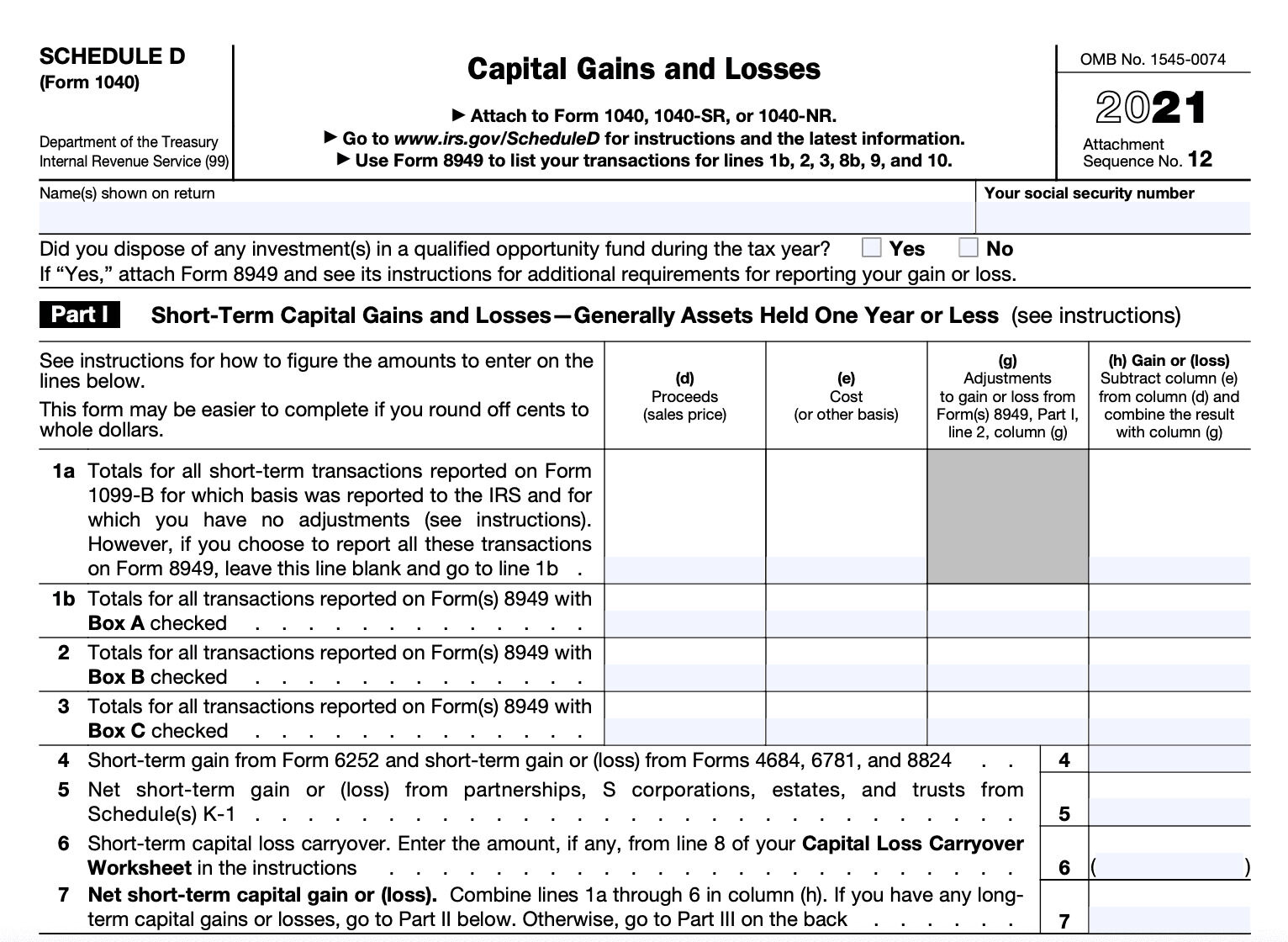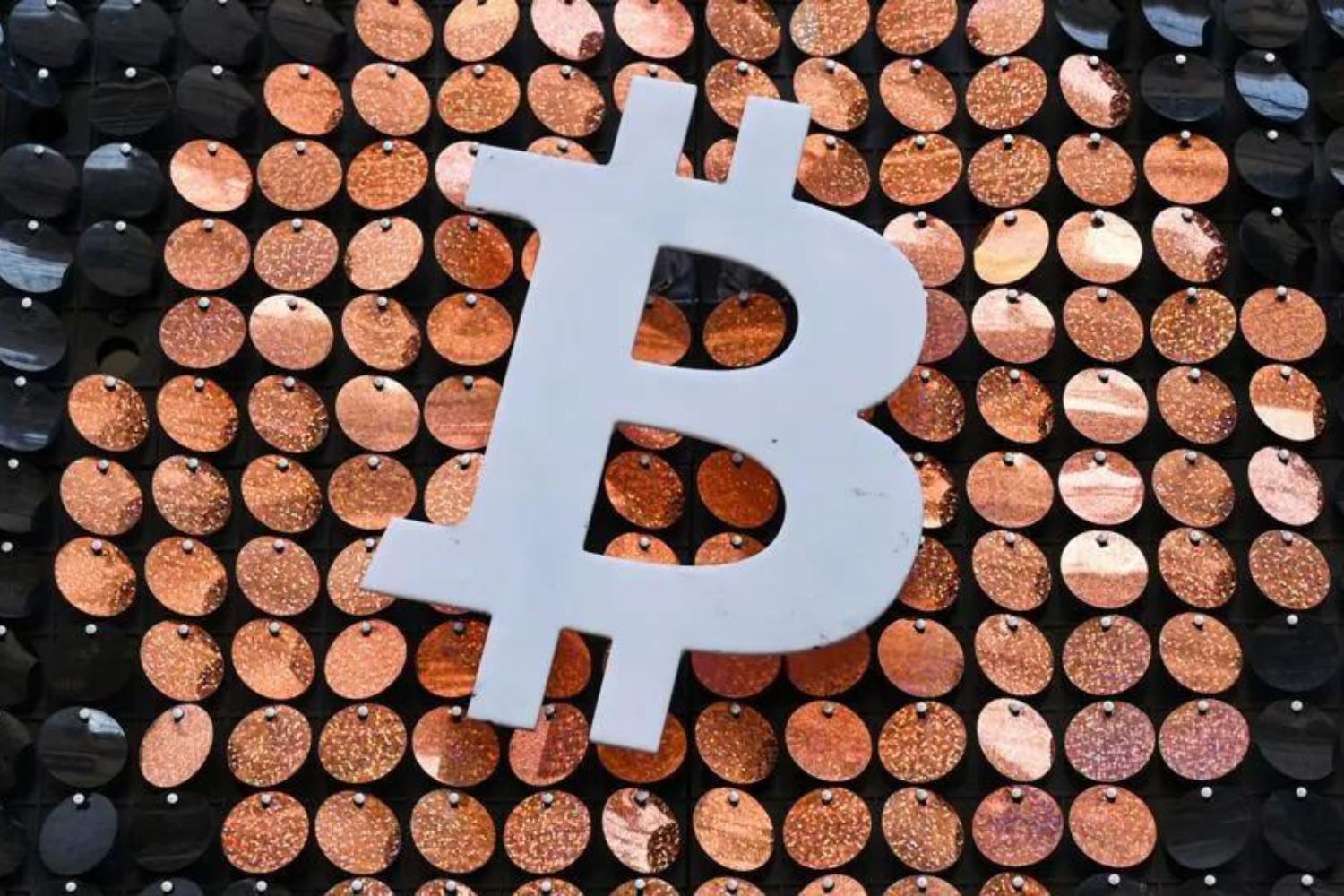Introduction
Welcome to the world of Bitcoin! If you’re new to the concept of cryptocurrency or looking to expand your digital asset portfolio, this article will guide you through the process of purchasing Bitcoin. Bitcoin, the first and most popular cryptocurrency, has revolutionized the way we think about money and transactions.
Bitcoin is a decentralized digital currency that allows for secure, peer-to-peer transactions without the involvement of banks or middlemen. Launched in 2009 by an anonymous person or group of people using the pseudonym Satoshi Nakamoto, Bitcoin operates on a technology called blockchain, a distributed ledger that records all transactions across a network of computers.
Setting up a Bitcoin wallet is the first step to start your journey into the world of cryptocurrencies. A Bitcoin wallet is simply a digital wallet that allows you to store, send, and receive Bitcoin securely. There are various types of wallets, including software wallets, hardware wallets, and online wallets.
When it comes to purchasing Bitcoin, selecting a reliable exchange platform is crucial. An exchange platform acts as a marketplace where buyers and sellers can trade Bitcoin and other cryptocurrencies. It’s important to choose a reputable and trustworthy exchange that offers a user-friendly interface, strong security measures, and competitive fees.
Identity verification is a common requirement when signing up for a Bitcoin exchange platform. Due to anti-money laundering (AML) and know your customer (KYC) regulations, exchanges often require users to provide proof of identity and address. This verification process helps ensure the legitimacy of transactions and protects against fraud.
Funding your Bitcoin wallet is the next step after verification. You can fund your wallet by linking it to your bank account, using a credit or debit card, or transferring Bitcoin from another wallet. Each funding method has its own advantages and considerations, such as transaction fees and processing times.
Once your wallet is funded, you are ready to make your first Bitcoin purchase. The process involves selecting the desired amount of Bitcoin, confirming the transaction details, and completing the purchase. It’s important to double-check the recipient’s address and verify all details before finalizing the transaction.
After purchasing Bitcoin, it’s crucial to store and secure your digital assets properly. Bitcoin wallets use public and private keys to access and manage your funds. It’s recommended to store your private keys offline in a secure location, such as a hardware wallet or paper wallet, to protect against potential hacks or unauthorized access.
As with any financial transaction, it’s essential to be aware of common pitfalls and mistakes to avoid. This includes conducting thorough research, using secure and reputable platforms, and not investing more than you can afford to lose. Additionally, stay updated with the latest news and trends in the cryptocurrency market.
Now that you have a basic understanding let’s delve into the details of how to set up a Bitcoin wallet, choose an exchange platform, navigate the verification process, fund your wallet, make a Bitcoin purchase, and store and secure your digital assets.
What is Bitcoin?
Bitcoin is a decentralized digital currency that allows for secure, peer-to-peer transactions without the involvement of banks or middlemen. It was invented in 2009 by an anonymous person or group of people using the pseudonym Satoshi Nakamoto. Bitcoin operates on a technology called blockchain, which is a distributed ledger that records all transactions across a network of computers.
Unlike traditional currencies, such as the US Dollar or Euro, Bitcoin is not issued or controlled by any central authority like a government or bank. Instead, it is created and managed by a network of participants called miners, who use powerful computers to solve complex mathematical problems to validate and add new transactions to the blockchain.
One of the key features of Bitcoin is its limited supply. There will only ever be 21 million bitcoins in existence, which gives it scarcity and helps to maintain its value. Bitcoin can be divided into smaller units called satoshis, with one bitcoin equivalent to 100 million satoshis.
Bitcoin offers several advantages over traditional forms of currency. First, transactions can be conducted quickly and securely without the need for intermediaries. Payments can be made instantly, and the recipient can access funds without waiting for bank processing times.
Second, Bitcoin is pseudonymous, meaning that while transactions are recorded on the blockchain, users’ identities are not directly tied to their transactions. Instead, Bitcoin addresses, which are a series of alphanumeric characters, are used to send and receive funds. This provides a certain level of privacy compared to traditional banking systems.
Another benefit of Bitcoin is lower transaction fees. When compared to international bank transfers or credit card payments, Bitcoin transactions typically have lower fees. This makes it an attractive option for individuals or businesses conducting cross-border transactions.
Bitcoin has gained popularity as both a digital currency and an investment asset. Many people buy and hold Bitcoin as a long-term investment due to its potential for appreciation. Bitcoin’s price can be volatile, however, so it’s important to educate yourself and understand the risks associated with investing in cryptocurrencies.
In summary, Bitcoin is a decentralized digital currency that allows for secure, peer-to-peer transactions. It operates on a technology called blockchain and offers advantages such as quick and secure transactions, pseudonymity, and lower fees. Whether you are using Bitcoin for everyday transactions or as an investment, understanding its fundamentals is crucial for navigating the world of cryptocurrencies.
How to Set Up a Bitcoin Wallet
Before you can start buying and storing Bitcoin, you will need to set up a Bitcoin wallet. A Bitcoin wallet is a digital wallet that allows you to securely store, send, and receive Bitcoin. There are several types of wallets available, each with its own advantages and considerations.
1. Software Wallets: Software wallets are applications that you download and install on your computer or mobile device. They provide you with full control over your Bitcoin, as you have access to your private keys. Popular software wallets include Electrum, Exodus, and Ledger Live.
2. Hardware Wallets: Hardware wallets are physical devices that store your private keys offline. They provide enhanced security by keeping your keys offline and away from potential online threats. Examples of hardware wallets include Trezor, Ledger Nano S, and KeepKey. Make sure to purchase hardware wallets directly from the manufacturer or authorized resellers to avoid counterfeit products.
3. Online Wallets: Online wallets, also known as web wallets, are wallets that are hosted on the cloud by a third-party provider. They can be accessed from any device with an internet connection. While convenient, online wallets are considered less secure than software or hardware wallets as they rely on the security measures implemented by the provider. Popular online wallet options include Coinbase, Blockchain.com, and MyEtherWallet.
Regardless of the type of wallet you choose, the setup process typically involves the following steps:
1. Download or access the wallet: Depending on the type of wallet you choose, you will need to download the software or access the web-based platform. Ensure that you are downloading from official sources and that the website has proper security certificates.
2. Create a new wallet: Follow the instructions provided by the wallet software to create a new wallet. This usually involves selecting a strong password and generating a unique and secure recovery phrase. Make sure to write down the recovery phrase and store it in a safe place, as it will be crucial for recovering your wallet if your device is lost, stolen, or damaged.
3. Backup your wallet: Most wallets offer the option to create a backup of your wallet, either by exporting the private keys or saving a backup file. It is highly recommended to create a backup and store it in a separate location from your primary device.
4. Set up additional security features: Enable optional security features, such as two-factor authentication (2FA) or biometric authentication, if available. These extra security measures add an additional layer of protection to your wallet.
5. Receive your first Bitcoin: Once your wallet is set up, you will have a unique Bitcoin address. This address is used to receive Bitcoin from others. You can share your Bitcoin address with others to receive funds.
It’s important to note that while Bitcoin wallets are secure, they are not immune to vulnerabilities or human error. It’s crucial to keep your software and devices up to date, be cautious of phishing attempts and malicious software, and regularly back up your wallet to ensure the safety of your Bitcoin.
Now that you have set up your Bitcoin wallet, you are ready to move on to the next step: choosing a Bitcoin exchange platform.
Choosing a Bitcoin Exchange Platform
When it comes to buying Bitcoin, choosing the right exchange platform is crucial. An exchange platform acts as a marketplace where buyers and sellers can trade Bitcoin and other cryptocurrencies. There are several factors to consider when selecting a Bitcoin exchange platform that best suits your needs.
1. Reputation and Trust: Look for an exchange platform with a strong reputation and a track record of secure and reliable operations. Research online reviews and user experiences to ensure that the platform has a positive reputation within the cryptocurrency community.
2. Security Features: Security should be a top priority when selecting an exchange platform. Look for platforms that offer features such as two-factor authentication (2FA) and cold storage of funds. Cold storage refers to keeping the majority of user funds offline in secure locations, minimizing the risk of hacking attempts.
3. User Interface: A user-friendly and intuitive interface can greatly enhance your trading experience. Look for a platform that provides a smooth and easy-to-navigate interface, making it simple to place orders, track investments, and manage your account.
4. Range of Supported Cryptocurrencies: If you’re interested in diversifying your cryptocurrency portfolio, check if the exchange platform supports a wide range of cryptocurrencies. While Bitcoin is the most popular, having the option to trade other cryptocurrencies can provide additional investment opportunities.
5. Liquidity and Trading Volume: High liquidity and trading volume are indicators of a well-established and active exchange platform. Platforms with high liquidity ensure that your orders can be executed quickly at fair prices, minimizing slippage and reducing the risk of market manipulation.
6. Fees and Payment Methods: Consider the fees associated with trading on the platform. Some exchanges charge a percentage fee based on the trade volume, while others have a fixed fee per transaction. Additionally, ensure that the exchange supports payment methods that are convenient for you, such as bank transfers, credit cards, or popular payment processors.
7. Customer Support: A responsive and helpful customer support team is essential in case you encounter any issues or have questions about the platform. Look for exchanges that offer multiple channels of customer support, such as live chat, email, or phone support, and check their average response times.
It’s important to compare multiple exchange platforms and consider your individual requirements and preferences. Some popular Bitcoin exchange platforms include Coinbase, Binance, Kraken, Bitstamp, and Gemini. Take the time to research and evaluate each platform to ensure that it meets your specific needs.
Lastly, be cautious of phishing attempts and fake exchange platforms. Double-check the website domain and ensure that you are using the official platform. This will help protect your funds and personal information from potential scams.
Now that you have chosen a reliable Bitcoin exchange platform, the next step is to go through the identity verification process.
Identity Verification Process
Identity verification is a crucial step when signing up for a Bitcoin exchange platform. It serves as a measure to ensure compliance with anti-money laundering (AML) and know your customer (KYC) regulations, as well as to enhance security and prevent fraudulent activities within the cryptocurrency ecosystem.
The identity verification process typically involves the following steps:
1. Provide Personal Information: When creating an account on a Bitcoin exchange platform, you will be required to provide personal information such as your full name, date of birth, address, and contact details. This information is necessary to establish your identity and comply with regulatory requirements.
2. Upload Identification Documents: Most Bitcoin exchange platforms will ask you to submit identification documents, such as a passport, driver’s license, or national ID card. It is important to ensure that the documents you provide are valid, clear, and in the required format specified by the platform.
3. Proof of Address: In addition to identification documents, some exchange platforms may ask for proof of address. This can be achieved by submitting a utility bill, bank statement, or any other official document that clearly shows your name and residential address. Make sure the document is recent and matches the personal information provided.
4. Selfie or Photo Verification: Some platforms require users to upload a recent selfie or photo along with their identification documents. This helps to confirm that the person submitting the documents is the same as the one depicted in the images.
5. Verification Process Timeframe: The time it takes to verify your identity can vary between exchange platforms. Some platforms have automated processes that can verify your identity within minutes, while others may take several days or even weeks, depending on the volume of verification requests and additional manual review processes.
During the verification process, it is important to provide accurate and up-to-date information. Any discrepancies or inconsistencies may delay the verification or result in rejection. If your identity is rejected, follow the instructions provided by the platform to rectify the issue or contact their customer support for assistance.
It’s worth noting that identity verification is a one-time process for most exchange platforms. Once your identity is verified, you can proceed with trading and conducting transactions within the platform’s limits. However, some platforms may require additional verification steps for higher trading volumes or advanced features.
Security and privacy are paramount during the identity verification process. Reputable Bitcoin exchange platforms implement strict security protocols to protect your personal information and ensure it is handled securely. Make sure to choose platforms that prioritize customer data protection and use encryption methods to safeguard sensitive information.
By completing the identity verification process, you are one step closer to fully utilizing the functionalities of your chosen Bitcoin exchange platform. The next step is to fund your Bitcoin wallet, which will allow you to start buying and selling Bitcoin.
Funding your Bitcoin Wallet
Once you have set up your Bitcoin wallet and completed the necessary identity verification process, the next step is to fund your wallet. Funding your Bitcoin wallet allows you to have the necessary balance to make purchases or investments in Bitcoin.
There are several methods you can use to fund your Bitcoin wallet:
1. Bank Transfers: One common method is to link your bank account to your Bitcoin exchange platform. This allows you to transfer funds from your bank account directly into your Bitcoin wallet. Bank transfers are typically secure and may have lower transaction fees compared to other payment methods.
2. Credit or Debit Cards: Many Bitcoin exchange platforms accept credit or debit cards as a form of payment. By linking your card to your wallet, you can easily purchase Bitcoin and have the funds deposited directly into your wallet. It’s important to note that credit card purchases may be subject to additional fees.
3. Online Payment Processors: Some Bitcoin exchange platforms support online payment processors such as PayPal or Skrill. These payment processors act as intermediaries, allowing you to transfer funds from your PayPal or Skrill account to your Bitcoin wallet. However, not all platforms accept these payment methods, so be sure to check the platform’s supported options.
4. Peer-to-Peer (P2P) Transactions: Peer-to-peer trading platforms, such as LocalBitcoins, allow you to buy Bitcoin directly from other individuals. These platforms act as intermediaries, connecting buyers and sellers and facilitating the transaction. In P2P transactions, you can choose the payment method agreed upon with the seller, such as cash, bank transfer, or online payment.
5. Cryptocurrency Transfers: If you already have other cryptocurrencies, such as Ethereum or Litecoin, you can transfer them to your Bitcoin wallet. Many exchange platforms support the option to exchange one cryptocurrency for another, allowing you to easily convert your existing holdings into Bitcoin.
When funding your Bitcoin wallet, it’s important to consider factors such as transaction fees, processing times, and limits imposed by the exchange platform. These factors can vary depending on the chosen payment method and the specific platform you are using.
It’s also crucial to be mindful of security when funding your Bitcoin wallet. Ensure that you are using a trusted exchange platform that implements robust security measures to protect your funds. Be cautious of phishing attempts and double-check payment details before processing any transactions to avoid fraudulent activities.
Once your wallet is funded, you can start making Bitcoin purchases or investing in other cryptocurrencies. Keep in mind that the value of Bitcoin can fluctuate, so it’s important to stay informed about market trends and make well-informed decisions.
In the next section, we will explore the process of making a Bitcoin purchase, allowing you to acquire your desired amount of this digital currency.
Making a Bitcoin Purchase
Now that your Bitcoin wallet is funded, you’re ready to make your first Bitcoin purchase. Whether you’re buying Bitcoin as an investment or for everyday transactions, the process is straightforward and can be completed through your chosen Bitcoin exchange platform.
Here’s a step-by-step guide on how to make a Bitcoin purchase:
1. Choose the desired amount: Decide how much Bitcoin you want to purchase. You can buy Bitcoin in fractions, so you don’t have to buy a whole Bitcoin. Enter the amount you wish to purchase in your local currency or in Bitcoin, depending on the platform’s options.
2. Review the transaction details: Double-check the transaction details, including the amount of Bitcoin you’re buying, the exchange rate, and any applicable fees. Make sure all the information is correct before proceeding.
3. Confirm the transaction: Once you’re satisfied with the transaction details, click the “Confirm” or “Buy” button. At this stage, some platforms may require you to confirm the purchase with an additional security measure, such as two-factor authentication (2FA) or a verification code sent to your email or mobile device.
4. Complete the purchase: Depending on the exchange platform and payment method you’ve chosen, you may need to follow additional steps to complete the purchase. For example, if you’re using a bank transfer, you may be directed to initiate the transfer and provide the necessary payment details. If you’re using a credit or debit card, you may need to enter the card details and complete the payment process.
5. Wait for the transaction to process: After completing the purchase, the exchange platform will process the transaction. The time it takes for the Bitcoin to appear in your wallet can vary depending on network congestion and the platform’s processing times. In most cases, the Bitcoin will be deposited into your wallet shortly after the transaction is confirmed.
6. Confirm the receipt of Bitcoin: Once the Bitcoin is in your wallet, confirm that the transaction has been successfully executed. You can view the transaction details within your wallet or on the exchange platform’s transaction history. Ensure that the amount of Bitcoin matches your purchase order.
It’s important to note that the price of Bitcoin can fluctuate rapidly, so the exchange rate at the time of purchase may differ from the rate displayed during the transaction process. Keep this in mind and be aware of any applicable fees or charges associated with the purchase.
Lastly, always practice good security hygiene when making Bitcoin purchases. Ensure that you are using a secure internet connection and be cautious of phishing attempts or fraudulent platforms. Double-check the payment details and the recipient’s Bitcoin address before confirming the transaction.
Congratulations! You have now successfully made your Bitcoin purchase. The next step is to learn about storing and securing your Bitcoin to protect your investment.
Storing and Securing Your Bitcoin
Once you have purchased Bitcoin, it’s crucial to properly store and secure it to protect your investment. Bitcoin is a digital asset, and unlike traditional currency, it is not physically tangible. Here are some important considerations for storing and securing your Bitcoin:
1. Choose a Secure Wallet: Select a secure Bitcoin wallet to store your cryptocurrency. There are different types of wallets available, including software wallets, hardware wallets, and online wallets. Software wallets are typically downloaded as applications on your computer or mobile device, while hardware wallets are physical devices that store your Bitcoin offline. Online wallets are hosted in the cloud by a third-party provider. Choose the type of wallet that best suits your needs and ensure it has a strong reputation for security.
2. Secure Your Private Keys: Private keys are essential to access and manage your Bitcoin. Make sure to keep your private keys secure. If you lose your private keys, there is no way to recover them, and you may lose access to your Bitcoin. Consider storing your private keys offline in a secure location, such as a hardware wallet or a piece of paper kept in a safe place.
3. Enable Two-Factor Authentication (2FA): Two-factor authentication adds an extra layer of security to your wallet by requiring a second form of verification, such as a code generated by a mobile app or sent via SMS. Enable 2FA on your wallet and make sure to use a strong, unique password.
4. Stay Updated with Wallet Software: Keep your wallet software up to date with the latest versions and security patches. Wallet providers often release updates to address security vulnerabilities. Regularly check for updates and apply them promptly to ensure the highest level of security for your Bitcoin.
5. Backup Your Wallet: Create regular backups of your wallet in case of hardware failure, loss, or theft. Wallets often provide an option to backup your wallet’s seed phrase, private keys, or wallet file. Store the backups in separate physical locations or use encrypted storage to safeguard against data loss or theft.
6. Be Wary of Phishing Attempts: Beware of phishing attempts or malicious websites that aim to steal your Bitcoin. Keep in mind that Bitcoin transactions are irreversible, so always verify the authenticity of websites before entering your private keys or making any transactions.
7. Diversify Storage Methods: Consider diversifying your Bitcoin storage methods. For example, you might keep a portion of your Bitcoin in a software wallet for easy access and use a hardware wallet to store the bulk of your holdings. This approach minimizes the risk of losing all your Bitcoin in case of a security breach or loss of one storage method.
8. Educate Yourself: Stay updated with the latest security practices and trends in the cryptocurrency space. Educate yourself about common scams, best practices for securing your Bitcoin, and new security developments. Leverage reliable sources of information such as reputable cryptocurrency websites and forums.
Remember, securing your Bitcoin is essential to protect your investment and prevent unauthorized access. By following these best practices, you can minimize the risk of theft or loss and ensure the safety of your digital assets.
Next, let’s explore some common mistakes to avoid when buying Bitcoin to further enhance your knowledge in navigating the cryptocurrency landscape.
Common Mistakes to Avoid When Buying Bitcoin
While buying Bitcoin can be an exciting endeavor, it’s important to be aware of common mistakes that novices and even experienced users can make. Avoiding these mistakes can help ensure a smoother and more secure Bitcoin buying experience. Here are some common pitfalls to watch out for:
1. Lack of Research: Failing to conduct thorough research before buying Bitcoin is a common error. Understand the basics of Bitcoin, its price volatility, and the factors that can influence its value. Stay informed about market trends, news, and regulatory developments that may impact the cryptocurrency landscape.
2. Investing More Than You Can Afford to Lose: Bitcoin and cryptocurrencies, in general, are known for their volatility. It’s essential to invest an amount that you are comfortable with and can afford to lose. Avoid investing your life savings or taking on significant debt to buy Bitcoin.
3. Using Unreliable or Unsecure Platforms: Be cautious when choosing a Bitcoin exchange platform. Research and choose reputable and secure platforms that have a track record of providing a reliable service. Read user reviews, check for security features, and verify the platform’s regulatory compliance.
4. Ignoring Security Practices: Neglecting security measures can expose you to risks. Secure your Bitcoin wallet with a strong password, enable two-factor authentication (2FA), and regularly update your wallet software. Be cautious of phishing attempts and never share your private keys or wallet information with anyone.
5. Falling for Investment Scams: Be vigilant against investment scams promising guaranteed high returns or quick riches. Avoid investing in schemes that sound too good to be true or require large upfront payments. Exercise caution when making investment decisions and seek guidance from trusted experts if needed.
6. Failing to Secure Private Keys: Your private keys are the key to accessing and controlling your Bitcoin. Never store your private keys on unprotected devices or share them online. Use secure offline storage options, such as hardware wallets or paper wallets, to secure your private keys.
7. Not Backing Up Your Wallet: Failure to create regular backups of your wallet can result in potential loss of funds. Wallet backups ensure that even if your device is lost, stolen, or damaged, you can recover your Bitcoin. Follow the backup instructions provided by your wallet provider and store your backups in a safe and secure location.
8. Timing the Market: Trying to time the market to buy Bitcoin at the lowest price and sell at the highest price is challenging, even for experienced traders. It’s generally recommended to take a long-term investment approach rather than constantly trying to predict short-term market movements.
9. Overlooking Transaction Fees: Every Bitcoin transaction involves fees, whether it’s buying, selling, or sending Bitcoin. Familiarize yourself with the fee structure of your chosen exchange platform and consider the fees when making your investment decisions. Additionally, check for any hidden fees or extra charges that may apply.
10. Failing to Educate Yourself: Keep learning about Bitcoin and cryptocurrencies. Stay informed about new technologies, emerging trends, and regulatory developments. Educate yourself about best security practices, investment strategies, and potential risks in the cryptocurrency space.
Avoiding these common mistakes can help safeguard your Bitcoin holdings and ensure a more successful and enjoyable experience in the cryptocurrency market. By being informed, cautious, and proactive, you can navigate the challenges and reap the benefits of owning Bitcoin.
Now that you’re aware of these common pitfalls, you can make better-informed decisions when buying and managing your Bitcoin.
Conclusion
Congratulations on reaching the end of this guide on purchasing Bitcoin! By now, you have learned the fundamentals of Bitcoin, how to set up a Bitcoin wallet, choose a reputable exchange platform, navigate the identity verification process, fund your wallet, make a Bitcoin purchase, and store and secure your digital assets.
Bitcoin has revolutionized the concept of money and transactions, providing a decentralized and secure alternative to traditional forms of currency. As with any investment or financial undertaking, it’s important to approach buying Bitcoin with caution and a good understanding of the risks and best practices.
Remember to conduct thorough research, choose reputable and secure platforms, and invest only what you can afford to lose. Follow security best practices, such as securing your private keys and enabling two-factor authentication. Stay informed about market trends and regulatory developments to make well-informed investment decisions.
Bitcoin and cryptocurrencies continue to evolve, and the landscape can sometimes be complex and volatile. However, with the right knowledge and precautions, you can navigate this exciting world and take advantage of the potential benefits that Bitcoin offers.
As you continue your journey in the cryptocurrency market, consider expanding your knowledge, exploring different cryptocurrencies, and staying up to date with technological advancements. Stay vigilant and be cautious of scams or fraudulent activities that target unsuspecting users.
Remember, this guide provides a general overview, and it’s always beneficial to seek additional information and advice from reputable sources. Take advantage of online communities, forums, and educational resources to enhance your understanding of Bitcoin and the broader blockchain ecosystem.
With responsible investing, continuous learning, and secure practices, you can make the most of your Bitcoin experience. Embrace the opportunities and possibilities that Bitcoin offers, and enjoy being part of the ever-growing world of cryptocurrencies!







